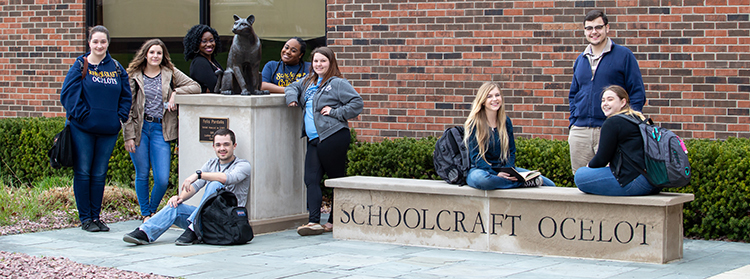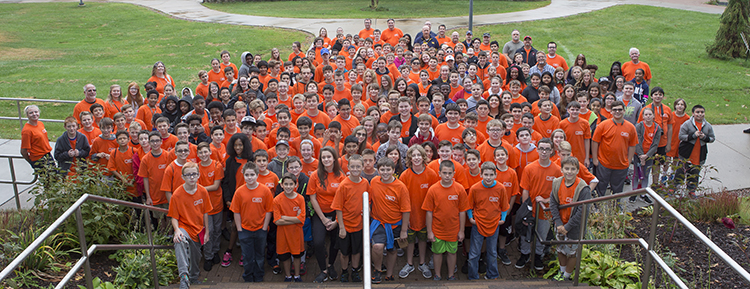Workforce Preparation: Where Today’s Community Colleges Should Focus
By Glenn R. Cerny, EdD, Schoolcraft College President
foundation@schoolcraft.edu
Perspectives, Ferris State University, DCCL Program

After World War II, community colleges were at the forefront of providing the United States with a robust and highly skilled workforce, helping to create the world’s greatest economy. The formula was clear: provide hands-on education focused on relevant skills for industry and foster foundational learning to transfer students successfully to a four-year institution. Accessibility was a key driver, enabled through significant Pell Funding, ensuring that all populations could take advantage of community colleges, which served as an innovative, economic engine that benefited students, business, industry, and surrounding communities.
Over the past two decades, states have drastically flatlined or cut funding to community colleges. Instead of directly funding the economic engine that was responsible for the creation of a highly successful middle class prior to the start of the 21st century, community colleges are now relying on piecemeal funding through grants, government workforce departments, and other mechanisms that were intended to replace cuts that were occurring at the state level. At the same time, there has been a push to channel more high school students directly to four-year institutions, bypassing community colleges, decreasing the availability of business and industry-ready talent, and contributing to student loan debt approaching $1.7 trillion dollars, the highest consumer debt category outside of home mortgages recorded in the history of the United States.
Currently, the United States is faced with a dramatic workforce development problem that has been a growing issue over the past twenty years. Global competition, the 2009 Great Recession, technological advancements, and now the COVID-19 global pandemic have contributed to a degradation of the workforce. At Schoolcraft College, we have learned to think outside the box to combat these challenges. One of the major solutions to the workforce problem would be to correct the funding model for community colleges, but I believe there are a great number of alternative opportunities that community college leaders can leverage as we come out of the pandemic to help prepare our students to transition into the workforce.
Over the past ten years, I have learned that community colleges must look at developing long-term relationships that translate into sustainable solutions. Investing time and effort into these long-term or “home-run” initiatives enables the college community as a whole to have a greater impact. Shorter-term initiatives, or the “single hits”, while important, often provide a limited, one-time boost, whether that is in terms of enrollment, credit hours, or the bottom line of college financial statements. When it comes to workforce preparation for students and an increased talent pipeline for business and industry partners, it is the home-run solutions that move us toward sustainability.
Inclusion, Diversity, Equity, and Access (IDEA). Higher education needs a renewed emphasis on the concepts of Inclusion, Diversity, Equity and Access (IDEA), starting with training and education for employees to foster safe and welcoming environments. This may begin as vital single-hit initiatives, but community colleges, due to their partnerships within the surrounding communities and local businesses, are poised to create more enduring home-run initiatives through a longer-term focus on IDEA training and education.
Just as community colleges have acted as an economic engine in our communities, we can become a driving force for equity and cultural change, which is in alignment with the Missions and Values we have stood behind for years. It is time to take the steps necessary to become even more influential in our communities, bridging gaps as they emerge. We need to extend the education and training we provide beyond campus borders, and we need to invest in staff that can lead the way, effecting change within our institutions and forging partnerships within our surrounding communities.

Outreach and Awareness. Community colleges must focus on outreach and awareness to counteract stereotypes that have been perpetuated over that past several decades. With an eye towards the future, we need to focus on middle schools and develop partnerships with K-12. Community colleges can serve as an early provider for career and technical programs that are required by states. Not only does this educate students at a younger age about high-paying careers they may not know about, it allows us to shift the perspective of what community college is all about, not only for the student but also for their parents. Schoolcraft has only just begun to work with its local districts to bring middle school students to our campus, giving them hands-on opportunities in areas such as welding, manufacturing, healthcare, and information technology.
Additionally, the adult learner who has experience in the workforce but needs additional skills is an overlooked opportunity. Community colleges need to assess and evaluate adult learners’ work experience to provide credits based on competencies that don’t require additional classroom hours. This approach, paired with the expedited courses needed by adult learners to pursue new pathways, will facilitate a faster turnaround for degree and certification attainment. This helps move students forward in their careers, and it also helps close the workforce gap.

Institutional Effectiveness. Advisory committees have been an important aspect of community college programs, but I would classify them as a single hit. By developing a more relationship model with local businesses and industry, colleges and their community and industry partners end up having skin in the game. Both parties, if they are committed to the success of the relationship, become more aware of the needs of the other partner. This is a home-run solution for the college because it increases funding, enhances relevant skills-based education, allows for internships and practicums, and develops new hiring paths for students. For business and industry, the home-run solution opens up access to assets that would not have been available to them without the college partnership. Business and industry have greater access to an increased pipeline of qualified talent, and they can translate their skill requirements and needs into a curriculum and program of ongoing training. As the relationship with a college develops, a myriad of additional opportunities begin to grow organically.

Student Success and Engagement. The reason we as college and leaders and administrators are all here is to ensure that our students are successful. One of the many ways we can do this is to engage students on campus, as well as in the community. Colleges need to create services and systems that inform, educate, and support the student’s pathway, whether that leads to further education or directly into the workforce. This approach should include providing students with a well-rounded experience that features a variety of coursework options as well as experience exercising softer skills that can be obtained through involvement in student activities, music, arts, or sports. It is our job to train students to be well rounded, highly skilled individuals who can enter university or the workforce and then excel.
It is also vital to our students and our community that we expand college career centers. Not only should we be preparing students for participation in the workforce, but we should also be facilitating their exposure to in-demand jobs and then helping to place them.
Conclusion. The states will ultimately need to step up and invest in community colleges as they did in the decades leading up to the 21st century. State funding will be a catalyst for solving long-term workforce shortage problems and will support the continuous improvement initiatives that I have outlined. Investment at sufficient levels is necessary to improve this long-term problem, and community colleges should be held accountable for directing that investment to the most effective initiatives. I believe that the areas I have addressed, if appropriately funded, will be the basis upon which extensive improvement and expansion of the workforce talent market will be built.
We need to ensure that community colleges focus on Institutional Effectiveness; Outreach and Awareness; Inclusion, Diversity, Equity, and Access; and Student Success and Engagement. Each of these areas requires initiatives that are continually developed, deployed, and then measured with reliable data. This data should be continuously analyzed and should drive how community colleges invest in the initiatives, ensuring that what it does is effectively utilizing resources.
Best practices in workforce development will require that community colleges ensure the effective movement of students through programs and processes that yield generations of highly skilled workers and leaders. Over the past ten years, Achieve the Dream has invested millions of dollars to identify the “super elixir” of solutions, and the bottom line is: there is no golden solution. Progress will necessitate an array of continuous improvement initiatives, many that tie back to the four areas that I have described. Expanding and diversifying the pathways that our students may pursue to enter the workforce is the best way for us to increase the talent pipeline for our business and industry partners. The problem of scarce industry-ready talent has been brewing for years. If we don’t start to address the issue creatively, it will only get worse.

